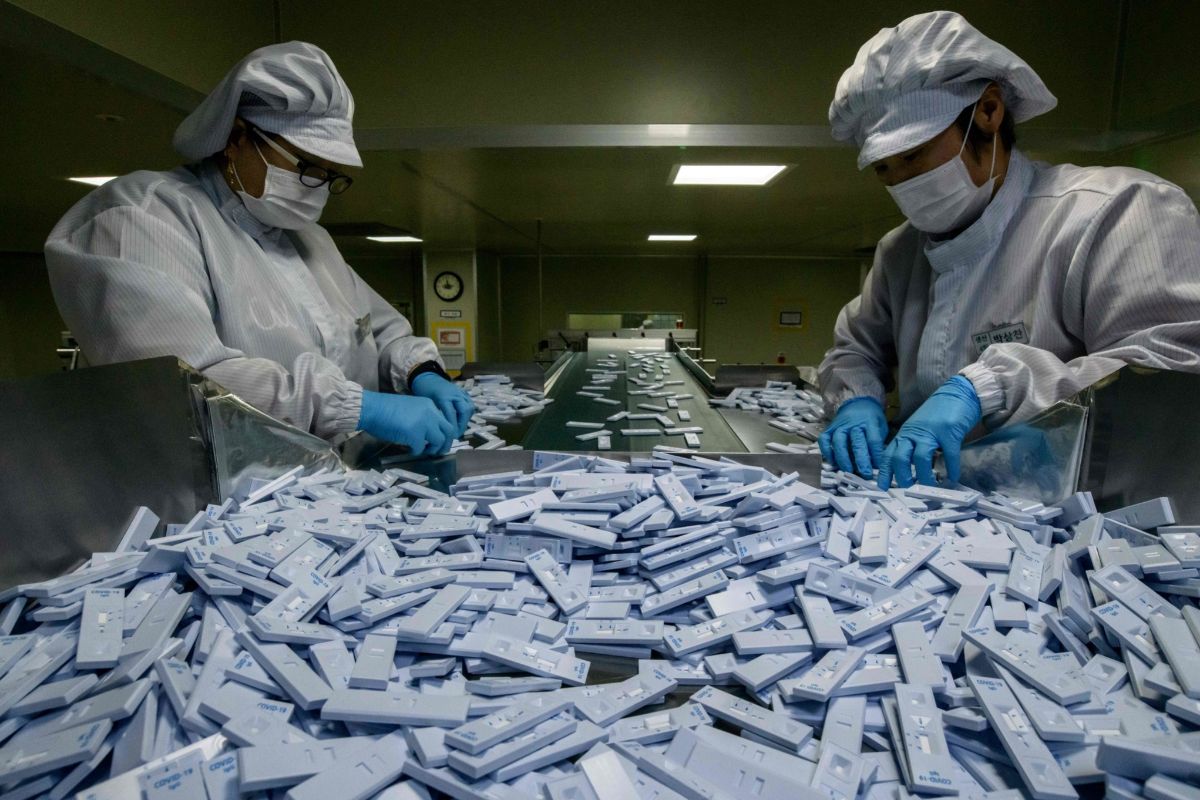- Breaking news: Coronavirus, latest live news: Sánchez announces the deadlock for the activity: all non-essential jobs should not open since Monday
- Health: coronavirus symptoms, treatment and how to avoid contagion
- Covid-19 map of the coronavirus in Spain: evolution of cases by autonomous community
For a few weeks now, the news, confinement, the media and social networks have brought into our everyday vocabulary terms such as "coronavirus", "FFP2 mask", "personal protective equipment" or "PCR". This last one is referred to the tests that the sanitarians carry out to know if a person is infected or not with the SARS-CoV-2 virus , causing the already known Covid-19.
Although these types of diagnostic tests have become commonplace, it is possible that, in reality, we do not know exactly what these tests are or how they work. Below, the most important keys and characteristics of them.
Definition: What is the so-called PCR test?
PCR is nothing more than the acronym resulting from the acronym, in English, of Polymerase Chain Reaction . This test allows us to check whether fragments of the genetic material of a certain pathogen or a microorganism that causes a disease exist in the patient's cells. In the case of the Wuhan coronavirus, what will be sought to determine in the laboratory with this test is the presence of an RNA molecule of the SARS-CoV-2 virus.
As we can see, it is not an exclusive test for the coronavirus responsible for the current pandemic ; in fact, it is a very common test and is routinely used in health centers that has been carried out since the 1980s. This PCR test serves us at the same time to detect the presence of other pathogens such as herpes, human papilloma virus, neisseria gonorrhea or human immunodeficiency virus, among many others.
Who developed this popular diagnostic test today?
As a curious fact, it should be noted that the inventors of this clinical polymerase test obtained the Nobel Prize in Chemistry in 1993 in recognition of this finding. It was an award shared by the American biochemist Kary Banks Mullis and the Canadian Michael Smith.
Step by step: how do healthcare professionals perform the test?
In order to carry out the test, we first need to obtain a sample of cells from the patient . This will take no more than a couple of minutes and is completely painless and, in addition, does not require prior preparation by the patient, although in some cases such sampling may be somewhat bothersome.
To do this, we will insert a swab (a small stick that has a cotton swab at one end) in both the patient's nostrils or down to the throat, in the region known as the oropharynx . Next we will repeatedly rub the cotton on the mucosa and keep it in a watertight container to send it to the laboratory.
Process: How are the extracted samples analyzed in the laboratory?
The first thing they should do with the received material is convert the SARS-CoV-2 virus RNA into DNA using a rather complex process . To do this, they extract the RNA of the virus from said sample and, once purified, mix it with an enzyme called “reverse transcriptase”, which converts single-stranded RNA into double-stranded DNA. From here, the process becomes even more complicated, since in the laboratory they will have to create millions of copies of that viral DNA that will bind to fluorescent dye molecules.
Results: How do you know if I am positive or negative?
The more DNA copies produced during the laboratory PCR test, the greater the fluorescence of the final result , which translates into a positive result (or what is the same: coronavirus infection).
If, on the other hand, there is no trace of coronavirus in the patient's sample, copies of viral DNA cannot be produced during the test and there will be no fluorescence in the final result, which will lead to a negative result (not infected by SARS-CoV-2).
Time: How long does it take to get the results?
This is one of the most important questions when we are in a pandemic. The time from when the test is performed until the result is communicated takes several hours, approximately four to six. Perhaps even more due to the high volume of work they currently have in accredited laboratories to carry out the PCR test, and also because it can take several hours for samples to arrive.
Efficacy: can these tests fail?
Yes. As with pregnancy tests or drug tests, PCR tests are not infallible . For this reason, continuous work is being done to improve the reliability of diagnostic tests, but few are one hundred percent. In the event that it fails, what is known as false negative (when a person is a carrier of the virus but the test says that they do not have it) or false positive (when the patient does not have the pathogen but the result tells us otherwise) may occur. ). The important thing is that their sensitivity is greater than 80%, as a minimum standard.
Other test options: how is the PCR test different from the antibody test?
As we have seen, the Polymerase Chain Reaction test works by detecting the presence of the virus in our body, that is, it detects the infection at the same time it is occurring.
In contrast, the antibody test consists of searching and discovering in our blood the presence of those antibodies that would have been produced by our immune system in response to the SARS-CoV-2 infection. If we have them, we have passed the disease and have overcome it.
According to the criteria of The Trust Project
Know more- Covid 19
- Coronavirus
- Infectious diseases
- Science and health
The Spanish virologist of Mount Sinai: "In the US we will be the same as Spain in a couple of weeks"
Coronavirus ends the Madrid nursing job exchange
The faces of the successful Wuhan trial

